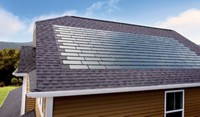Advertisement
Grab your lab coat. Let's get started
Welcome!
Welcome!
Create an account below to get 6 C&EN articles per month, receive newsletters and more - all free.
It seems this is your first time logging in online. Please enter the following information to continue.
As an ACS member you automatically get access to this site. All we need is few more details to create your reading experience.
Not you? Sign in with a different account.
Not you? Sign in with a different account.
ERROR 1
ERROR 1
ERROR 2
ERROR 2
ERROR 2
ERROR 2
ERROR 2
Password and Confirm password must match.
If you have an ACS member number, please enter it here so we can link this account to your membership. (optional)
ERROR 2
ACS values your privacy. By submitting your information, you are gaining access to C&EN and subscribing to our weekly newsletter. We use the information you provide to make your reading experience better, and we will never sell your data to third party members.
Materials
Solar Cells Get Chemistry Help
Photovoltaics: Chemical makers see efficiency opportunity
by Michael McCoy
September 28, 2009
| A version of this story appeared in
Volume 87, Issue 39

The European Photovoltaic Solar Energy Conference, held last week in Hamburg, Germany, attracted 40,000 visitors with agendas spanning the solar-energy spectrum. But for the chemical industry representatives who attended, just two key words mattered: cost and efficiency.
At the event, chemical companies unveiled new alliances and new products intended to reduce the cost—and raise the efficiency—of photovoltaic panels made of crystalline silicon or thin-film materials.
DuPont and Applied Materials, a maker of equipment used to fabricate solar panels, announced a collaboration to increase the efficiency of crystalline silicon panels. The firms intend to combine DuPont’s Solamet metallization pastes with Applied Materials’ screen-printing technology to print circuits on solar cells with greater electrical conductivity and smaller grid-line shadows.
Similarly, Merck KGaA and Germany’s Schiller Automation linked to build a pilot production line demonstrating a new means of silicon-wafer-edge isolation, an etching process that creates the active solar-cell areas. The line uses Merck’s Isishape etching paste, which yields panels that are more efficient than those made with laser- or wet-chemistry-based etchants, claimed Ingo Köhler, head of R&D for Merck’s structuring solutions business.
Improving solar-cell encapsulating materials was a common theme at the conference. Arkema, a French industrial chemicals firm, unveiled Apolhya Solar, a nanostructured polymer that it touts as an improvement over other encapsulation plastics. The new polymer requires no curing, Arkema said, thus saving time during production and simplifying end-of-life recycling.
Wacker Chemie, a leading producer of crystalline silicon for solar-cell fabrication, also supplies encapsulation polymers. At the solar conference, the German company introduced Tectosil, an organosilicone encapsulant that it said can be processed quickly, inexpensively, and without curing.
The materials and equipment companies exhibiting at the conference expressed confidence that their products would enable efficient solar cells to be made at low cost. In a presentation, Mark R. Pinto, Applied Materials’ chief technology officer, predicted that, by 2012, the typical crystalline-silicon-cell factory will have doubled output to more than 3,000 wafers per hour. And the wafers’ solar conversion efficiency will be 20%, up from 16% today.



Join the conversation
Contact the reporter
Submit a Letter to the Editor for publication
Engage with us on Twitter